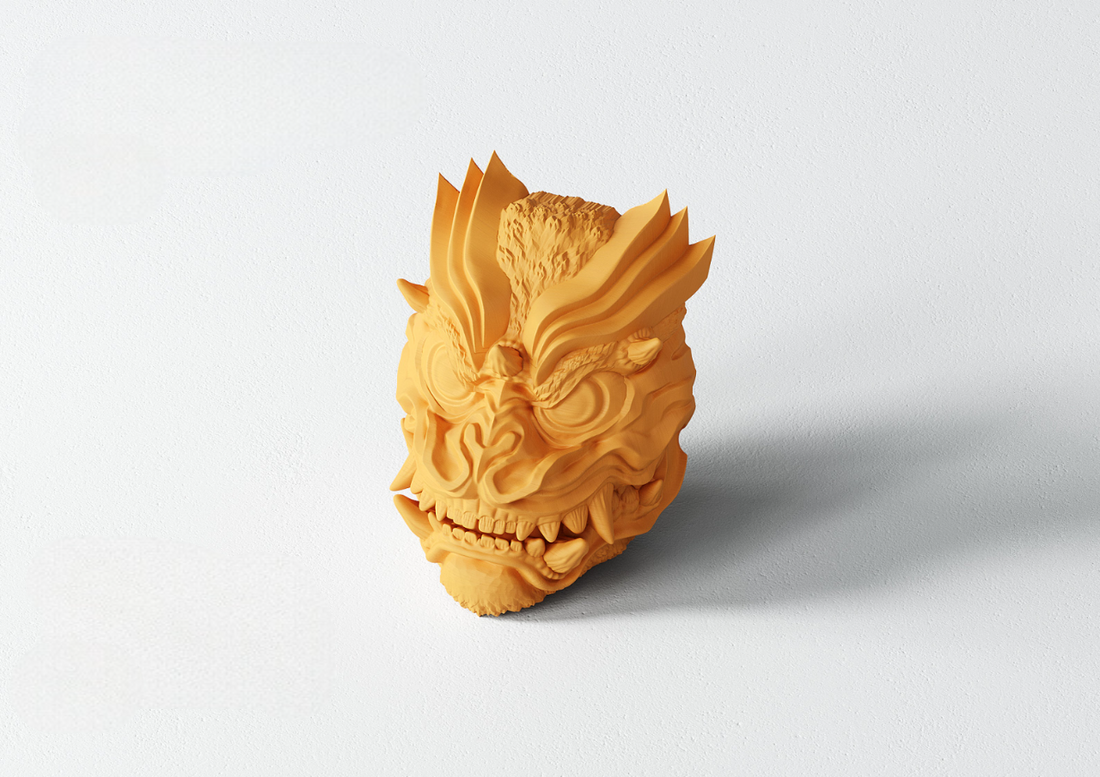
How to Make 3D Prints Stronger
Share
We've all been there-you're excited about your latest print, but when it comes to actual use, it snaps, cracks, or just doesn't hold up. So how do you turn those fragile prints into strong, durable models? With your AnkerMake printer, it's easier than you think.
Let's walk through a few simple tweaks and tricks to improve your print strength without sacrificing too much time or filament.
Ready to make your prints tougher? Let's go!
1. Choose a Stronger Filament
First things first: strength starts with the right material.
Not all filaments are created equal, and some are better for tough, functional prints than others. Which filament should you choose?
- PLA+: A stronger, more resilient version of PLA. Great if you want durability without too much fuss.
- ABS: Durable, heat-resistant, and good for parts that need to take some wear and tear.
- PETG: A sweet spot between strength and flexibility. It's tougher than PLA and great for impact resistance.
- Nylon: Top-tier for strength and flexibility-ideal for parts under high stress.
Pro Tip: Experiment with PETG or ABS if you need a balance of toughness and printability. They'll give you more strength than standard PLA.
{{ component: "product", handle: "pla-filament", sku: "V6110221"}}
2. Adjust Infill for the Right Balance
Infill isn't just there to hold your model together-it plays a huge role in strength. But you don't need to go crazy and crank the infill to 100%.
Here's how to make infill work for you:
-
Infill density: Aim for 20-50%. Going too high wastes filament and time without a massive boost in strength. For parts that need to handle serious stress, 40-50% is usually enough.
-
Infill pattern: Patterns like gyroid, grid, or triangles are super strong. These distribute force evenly and give you a durable model without too much material.
Pro Tip: Don't automatically max out the infill. Start with 30% and bump it up only if necessary-it's all about balance.
3. Increase Wall Thickness
Walls (or "shells") are your print's first line of defense against breaking. Increasing wall thickness can impact strength more than you might think-sometimes more than infill!
Here's the deal:
-
Increase wall thickness: Set your wall thickness to 1.2mm or higher. This is roughly 3-4 perimeters.
-
Boost the number of walls: For stronger prints, bump your shell count to 4 or 5 walls in AnkerMake Studio.
Pro Tip: If you're going for strength, prioritize thicker walls over higher infill density. You'll notice the difference, and your print won't feel flimsy.
4. Improve Layer Adhesion
One of the biggest reasons prints fail? Weak layer adhesion. If the layers don't bond well, your print is likely to break at the seams.
How to fix it:
-
Raise your nozzle temperature: Higher temps help layers bond more effectively. Try the upper end of the filament's recommended range. For PLA, that's around 210-220°C. For ABS, go up to 230-250°C.
-
Slow it down: Lowering your print speed to 40-50mm/s gives each layer more time to bond before the next one's laid down.
Pro Tip: If you're seeing weak spots or cracks, bump up the temp by 5-10°C. Layer bonding is everything when it comes to durability.
5. Optimize Print Orientation
Orientation is huge when it comes to print strength. Printing parts in the wrong direction can leave them weak and prone to breaking.
Get it right:
-
Align with force: Think about how the part will be used. If it needs to bear weight, orient it so the layers run perpendicular to the stress, not parallel.
-
Avoid weak Z-axis: Prints are naturally weaker along the Z-axis, so try to orient your model in a way that reduces stress in that direction.
Pro Tip: Do a quick test print with different orientations to see which one works best for your model's use case.
6. Try Post-Processing for Extra Strength
Post-processing isn't just about making your prints look good-it can also make them stronger. A few extra steps after printing can give your models a big boost in durability.
How to do it:
-
Annealing: Heating your PLA or ABS prints in the oven (around 70-100°C) can increase their strength by crystallizing the material. Be sure to let them cool slowly.
-
Acetone smoothing for ABS: This method not only smooths out the surface but also strengthens the outer layers by fusing them together.
Pro Tip: Always do a test run with post-processing. Some methods can warp prints, so start small before committing to a large piece.
7. Use Thicker Layers for Better Bonding
While thinner layers give you more detail, thicker layers actually make your prints stronger. The larger surface area of each layer creates a stronger bond between them.
Try this: Layer height of 0.2-0.3mm
If detail isn't the top priority, go for thicker layers. They bond better and speed up your print process, too.
Pro Tip: For functional parts where strength matters more than looks, use thicker layers in combination with higher temps for the best results.
How to Reinforce PLA Prints?
Make the wall thicker and use more material in the infill, about 20-50% more, to make it stronger. Also, raise the nozzle temperature to help the layers stick better and reduce weak spots. If you want something extra durable, try using PLA+ instead of regular PLA, as it's stronger and more resistant to breakage.
Why Are My 3D Prints So Weak?
Weak 3D prints are often the result of poor layer bonding, low infill density, or insufficient wall thickness. All of these things make the print fragile.
Also, If the nozzle temperature is too low or the print speed is too fast, the layers won't bond properly. This makes the print prone to breaking.
Ready to Build Stronger Prints?
From everyday parts to high-stress items, these tips will help you get the most out of your AnkerMake printer.
Ready to go? Your stronger, more durable models are just a few settings away!